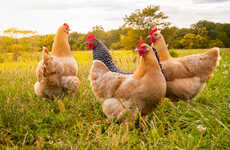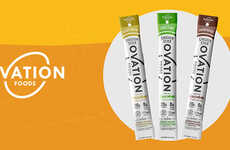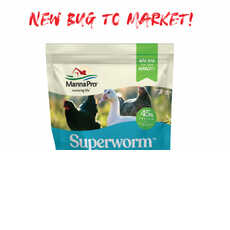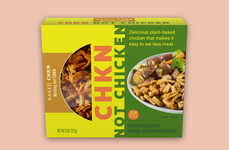
Nanoparticles Bind With Pathogens
References: clemson.edu
As people become more aware of their food sources, they increasingly demand “organicâ€, “naturalâ€, “hormone-freeâ€, and “drug-free†food products. In addition to market demand, it is also desirable to eliminate or limit the use of antibiotics because harmful organisms tend to become antibiotic resistant over time, requiring larger doses or the development of new drugs. This scenario is especially prevalent in chicken production that sometimes involves flocks as large as 300,000 birds.
To help meet market demands, while at the same time addressing the very real risk of disease in such large scale chicken production, Jeremy Tzeng and Clemson colleagues Fred Stutzenberger, Robert Latour Jr. and Ya-Ping Sun have developed a new kind of chicken feed that actually binds with the pathogens and allows them to pass harmlessly through the chicken's digestive system. As explained by Tzeng, "If we use this physical purging, physical removal, we are not using antibiotics so the chance of the microorganism becoming resistant to it is really smallâ€, calling the new technology “intelligent chicken feedâ€.
To help meet market demands, while at the same time addressing the very real risk of disease in such large scale chicken production, Jeremy Tzeng and Clemson colleagues Fred Stutzenberger, Robert Latour Jr. and Ya-Ping Sun have developed a new kind of chicken feed that actually binds with the pathogens and allows them to pass harmlessly through the chicken's digestive system. As explained by Tzeng, "If we use this physical purging, physical removal, we are not using antibiotics so the chance of the microorganism becoming resistant to it is really smallâ€, calling the new technology “intelligent chicken feedâ€.
Trend Themes
1. Demand for Organic, Natural, and Drug-free Food - Opportunity for food producers to develop innovative products and processes that meet the growing demand for organic, natural, and drug-free food products.
2. Reduction in Antibiotic Use in Food Production - Potential for disruptive technologies that can replace antibiotics in large-scale animal production, reducing the risk of antibiotic resistance.
3. Development of Pathogen-binding Feed - Emerging trend in the development of intelligent feed that can bind with pathogens and prevent their harmful effects in the digestive systems of animals.
Industry Implications
1. Food Production - Food producers and farmers can explore new methods and technologies to meet consumer demand for organic and drug-free products while ensuring food safety.
2. Animal Healthcare - Opportunity for animal healthcare companies to innovate and develop alternatives to antibiotics for preventing and treating diseases in large-scale animal production.
3. Nanotechnology - Nanotechnology industry can leverage the development of pathogen-binding nanoparticles in various applications, including food production, animal health, and more.
1.4
Score
Popularity
Activity
Freshness























